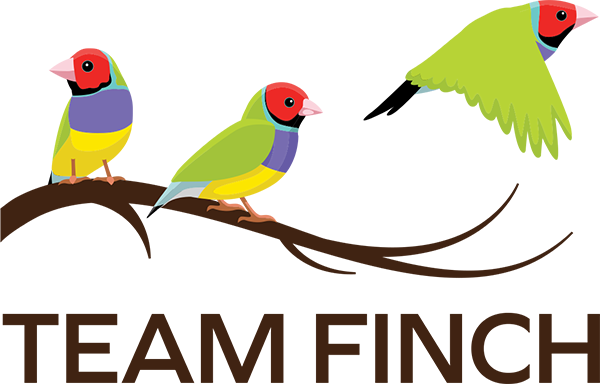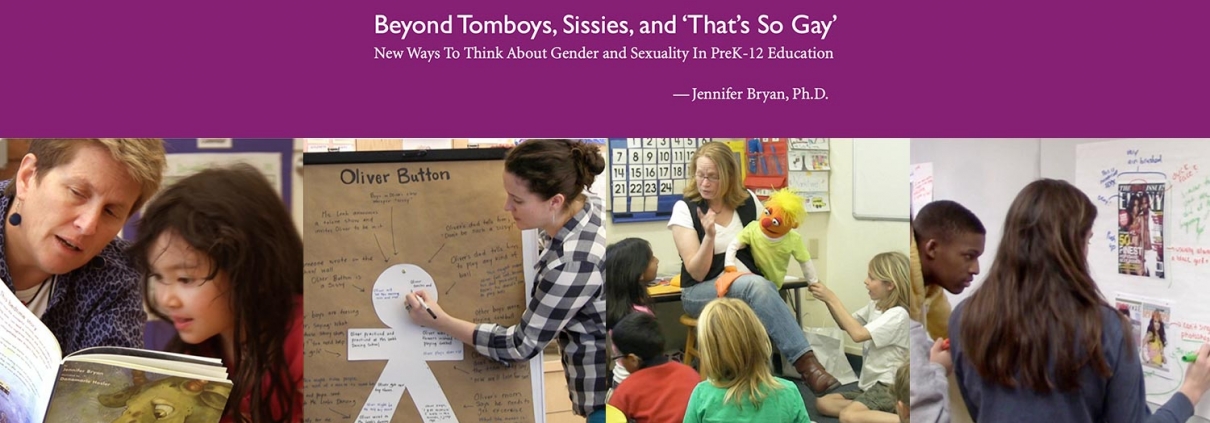Beyond Tomboys, Sissies, and ‘That’s So Gay’
Beyond Tomboys, Sissies, and ‘That’s So Gay’: New Ways To Think About Gender and Sexuality In PreK-12 Education
About: Jennifer Bryan, Ph.D.
We nurture our students and help them grow intellectually, physically, socially and emotionally
PreK-12 educators make this promise at the beginning of every school year and hope to succeed with each and every student in their charge. Yet Education’s outdated understanding of what healthy identity development looks like in relation to gender and sexuality for children and adolescents is a fundamental obstacle to this goal. Teachers are hampered by a paradigm that predicts a “typical” profile for boys and girls, and sets narrow expectations about who students can and should be in the world. This paper offers a different paradigm. Gender and Sexuality Diversity (GSD) is an inclusive, theoretically grounded, and now empirically supported framework for understanding these essential parts of human identity in our students and ourselves.
With politicians, the Supreme Court, social advocacy groups, medical professionals and scholars driving the gender and sexuality discourse, it is easy to lose sight of the practical and pedagogical imperatives of PreK-12 schooling. We aspire to (1) nurture the whole child, (2) cultivate safe, inclusive learning communities, (3) foster curiosity and a life-long love of inquiry, and (4) develop the critical thinking skills students need to navigate our increasingly complex, rapidly changing global world. By making the Gender and Sexuality Diversity paradigm shift proposed in this paper, we will substantially enhance our ability to attain each of these fundamental educational goals.
We nurture our students and help them grow intellectually, physically, socially and emotionally PreK-12 educators make this promise at the beginning of every school year and hope to succeed with each and every student in their charge. Yet Education’s outdated understanding of what healthy identity development looks like in relation to gender and sexuality for children and adolescents is a fundamental obstacle to this goal. Teachers are hampered by a paradigm that predicts a “typical” profile for boys and girls, and sets narrow expectations about who students can and should be in the world. This paper offers a different paradigm. Gender and Sexuality Diversity (GSD) is an inclusive, theoretically grounded, and now empirically supported framework for understanding these essential parts of human identity in our students and ourselves. With politicians, the Supreme Court, social advocacy groups, medical professionals and scholars driving the gender and sexuality discourse, it is easy to lose sight of the practical and pedagogical imperatives of PreK-12 schooling. We aspire to (1) nurture the whole child, (2) cultivate safe, inclusive learning communities, (3) foster curiosity and a life-long love of inquiry, and (4) develop the critical thinking skills students need to navigate our increasingly complex, rapidly changing global world. By making the Gender and Sexuality Diversity paradigm shift proposed in this paper, we will substantially enhance our ability to attain each of these fundamental educational goals.



